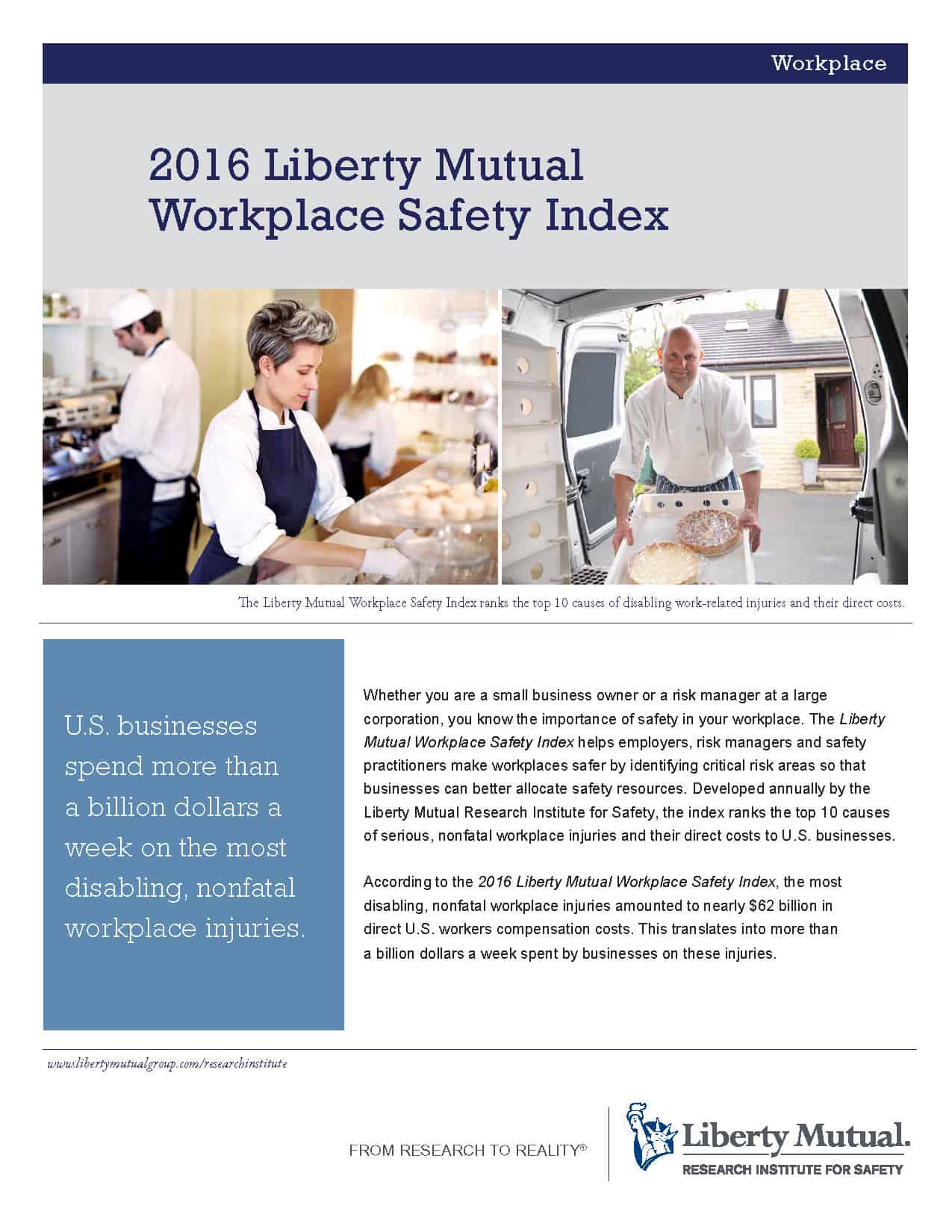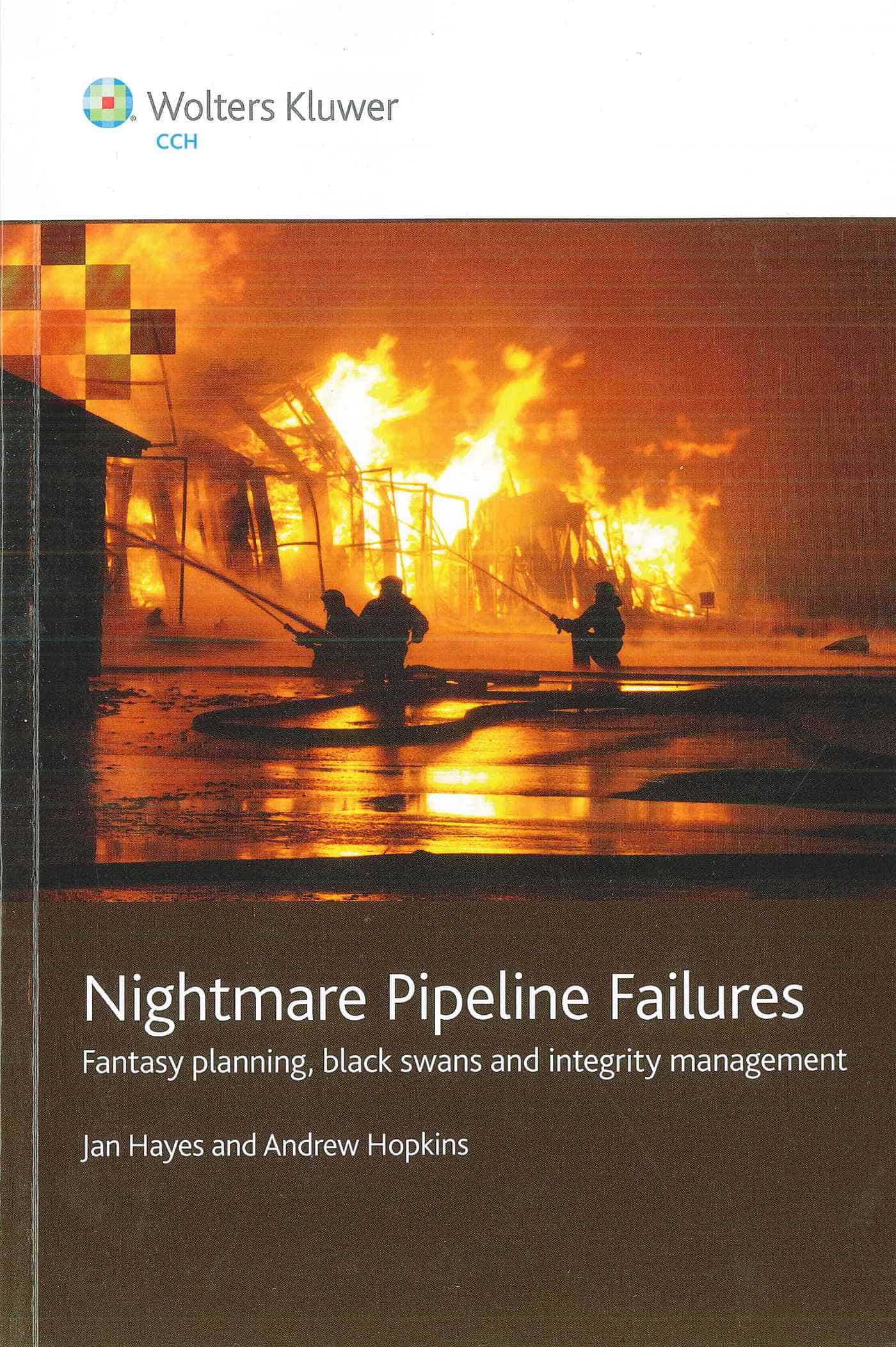 The annual workplace safety report Liberty Mutual Research Institute for Safety always gets a good deal of mainstream media attention. It deserves some of this attention as it has provided sound information on work-related injuries and injury costs for many years but it is now looking dated as it is not keeping up with current research in to the business case for safety, the move to leading indicators and the incorporation of psychosocial injuries (which are also covered by workers compensation). Continue reading “OHS cost research needs to stretch itself”
The annual workplace safety report Liberty Mutual Research Institute for Safety always gets a good deal of mainstream media attention. It deserves some of this attention as it has provided sound information on work-related injuries and injury costs for many years but it is now looking dated as it is not keeping up with current research in to the business case for safety, the move to leading indicators and the incorporation of psychosocial injuries (which are also covered by workers compensation). Continue reading “OHS cost research needs to stretch itself”
Category: United States
Health program impact on corporate share price is overstated
![]() An article from the January 2016 edition of the Journal of Occupational & Environmental Medicine (JOEM) has been gaining some attention through social media networks. The article, Tracking the Market Performance of Companies That Integrate a Culture of Health and Safety: An Assessment of Corporate Health Achievement Award Applicants, is being interpreted as evidence that health and safety programs lead to “superior market performance”. Yes and No, but mostly No. Continue reading “Health program impact on corporate share price is overstated”
An article from the January 2016 edition of the Journal of Occupational & Environmental Medicine (JOEM) has been gaining some attention through social media networks. The article, Tracking the Market Performance of Companies That Integrate a Culture of Health and Safety: An Assessment of Corporate Health Achievement Award Applicants, is being interpreted as evidence that health and safety programs lead to “superior market performance”. Yes and No, but mostly No. Continue reading “Health program impact on corporate share price is overstated”
Carrillo on leadership and communication
Rosa Carrillo of Carrillo & Associates, describes herself as a “thought leader in transformational leadership for environment, safety and health” with a “unique understanding of safety culture and complex environments”. Prior to her attendance as a keynote speaker at the SIA National Convention in September SafetyAtWorkBlog was able to ask Rosa Carrillo about leadership, trust and communication.
Carrillo is aware of the risk of transferring concepts and practices rather than translating them and tailoring them to local needs. She told SafetyAtWorkBlog:
“I am afraid that one of my core principles is that you can’t just take what someone else did to address human behavior and implement it with “minimal translation” even if it was developed in your own country. You can certainly do that more readily with technology, but even then you must customize its introduction. Most leading edge thinkers in the safety field agree that benchmarking leads you down the rose garden path. You spend lots of money and feel you are doing the right thing until the next disaster emerges.”
Trust, culture and productivity
In September 2015 Dr Matthew Hallowell will be speaking at the National Convention of the Safety Institute of Australia. Hallowell is a bit of an unknown to the Australian occupational health profession so SafetyAtWorkBlog posed a couple of questions to him as an introduction.
SAWB: Is it possible to establish trust and open communication in a company or industry sector, that has a fractious industrial relations relationship with trade unions?
MH: “This is a truly fundamental question to the industry that applies broadly to all project management functions, not just safety.
I think trust can be developed more easily in the context of safety (rather than productivity, for example) because safety involves altruism. I think trust is most dependent on the extent to which the various organizations on a project are willing, able, and encouraged to work together to solve a problem regardless of the contract structure.
In my opinion, integrated project delivery and design-build project delivery methods offer us a new opportunity to work together and build trust because there are more shared objectives and shared incentives.
The traditional lump-sum, design-bid-build contracting strategies with typical regulations around the world (e.g., OSHA that places safety responsibility solely on the contractors and subs), severely limits the opportunity to work together on any one goal.”
OHS issues from over the horizon
 On 18 March 2015, the Melbourne office of Herbert Smith Freehills conducted a breakfast seminar that doubled as a launch for the latest edition of the CCH Wolters Kluwer book Australian Master Work Health and Safety Guide (reviewed recently). The seminar had three of the book’s authors talking about emerging occupational health and safety (OHS) and work health and safety (WHS) issues for Australia. These included
On 18 March 2015, the Melbourne office of Herbert Smith Freehills conducted a breakfast seminar that doubled as a launch for the latest edition of the CCH Wolters Kluwer book Australian Master Work Health and Safety Guide (reviewed recently). The seminar had three of the book’s authors talking about emerging occupational health and safety (OHS) and work health and safety (WHS) issues for Australia. These included
- The growth of WHS/OHS “Assurance Programs”
- The potential implications for the safety management from the Trans-Pacific Partnership and Free Trade Agreements.
- The OHS trend in the European Union for “Supply Chain Safety“.
The first two of these topics are discussed below.
New book on pipeline safety has OHS lessons for all
 Any new book by Andrew Hopkins is a cause for excitement. The latest book co-written with Associate Professor Jan Hayes* focusses, primarily, on two pipeline disasters in the United States but has sufficient information and thoughts for those OHS professionals outside this sector and jurisdiction.
Any new book by Andrew Hopkins is a cause for excitement. The latest book co-written with Associate Professor Jan Hayes* focusses, primarily, on two pipeline disasters in the United States but has sufficient information and thoughts for those OHS professionals outside this sector and jurisdiction.
“Nightmare Pipeline Failures: Fantasy planning, black swans and integrity management” is a typically slim volume written in Plain English that benefits from the broad knowledge of its authors. Readers of Hopkins’ early books will get all of the cross-references. In some ways, this book can be seen as almost a case-study of Hopkins’ work on mindfulness and high-reliability organisation, as the themes of management perspectives, activity and decision-making occur repeatedly in this book. Continue reading “New book on pipeline safety has OHS lessons for all”
Poor editing could increase confusion on workplace bullying
One of the occupational health and safety (OHS) issues that does not “travel” well across international borders is workplace bullying. Each country usually has its own laws (if at all). Each operates in a different culture and each has a different definition of what constitutes workplace bullying. Those who communicate and publish information on this hazard need to be sure that an article is relevant to its readership or at least clearly indicate the article’s overseas origin.
On 28 May 2014 the Australian Financial Review (AFR) published a
